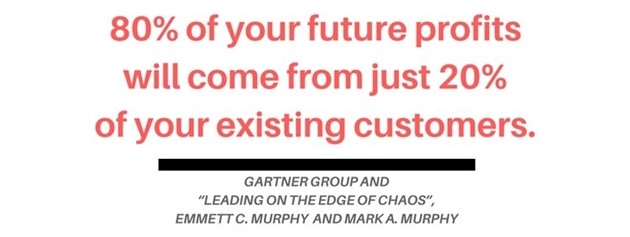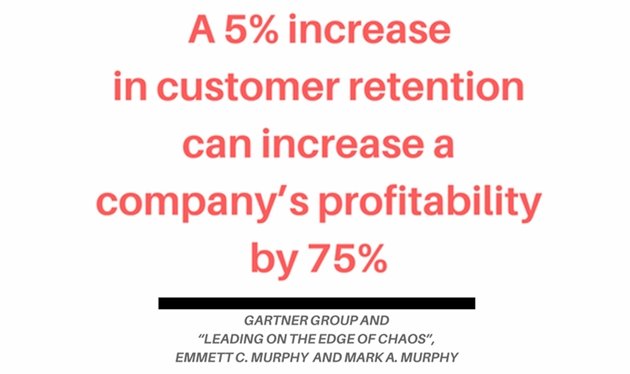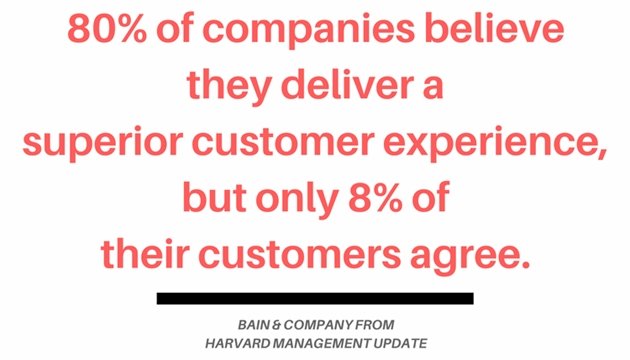The Gist
- AI authenticity crisis. The rush to adopt artificial intelligence has created a new category of marketing failures where technology replaces human connection, leaving audiences feeling manipulated rather than engaged.
- Heritage vs. evolution paradox. From luxury automakers to beloved restaurant chains, brands attempting radical transformations learned that evolution requires honouring your DNA while building toward the future.
- Crisis management meltdown. In our hyperconnected age, how brands respond to controversy matters as much as the initial campaign—wavering values and murky messaging amplify damage rather than contain it.
The marketing landscape has seen its successes and failures with advertising. The interesting fact is that people are becoming more vocal about what they like and don’t like.
Even Reddit has become a constant source of ad lessons, hosting distinct threads where people comment on bad ads. There is a dedicated channel called CommercialHate that displays ads and commentary.
These ads are more than poorly executed commercials. The responses are examples of sentiment analysis. They are case studies in what happens when brands misread cultural moments, abandon their heritage or let technology override authenticity.
Each failure offers lessons for marketing leaders navigating an increasingly complex digital ecosystem where every campaign faces instant, global scrutiny. In this post, we will look at the most notable brand examples of messaging missteps that have occurred in the last few years, and what lessons marketers can learn:
Table of Contents
- 1. Google Gemini’s Olympic Heartbreak: AI Replacing Human Expression (2024)
- 2. Levi’s AI-Generated Models: Diversity Without Investment (2023)
- 3. Coca-Cola’s AI Christmas: Technology Destroying Nostalgia (2024)
- 4. Anheuser-Busch’s Bud Light Crisis: The Art of the Non-Apology (2023)
- 5. Jaguar’s ‘Copy Nothing’ Gambit: Selling Identity Without Product (2024)
- 6. Zara’s ‘The Jacket’ Campaign: Missing the Room Entirely (2023)
- 7. Bumble’s ‘Celibacy is Not the Answer’: Missing Cultural Movements (2024)
- 8. American Eagle’s ‘Great Jeans’: When Wordplay Backfires (2025)
- 9. H&M’s ‘Coolest Monkey in the Jungle’: Implicit Bias on Display (2018)
- 10. PureGym’s ’12 Years A Slave’ Workout: Comparing Exercise to Enslavement (2020)
- Conclusion: What Can Marketing Leaders Expect in 2026?
1. Google Gemini’s Olympic Heartbreak: AI Replacing Human Expression (2024)
Google’s 2024 Olympics ad featured a parent suggesting their child use Gemini AI to write a letter to her favourite athlete. The intent was to showcase AI capabilities.
Critics argued the commercial suggested that even heartfelt messages of admiration—the kind that define Olympic spirit—should be outsourced to artificial intelligence. In a celebration of human achievement, suggesting AI mediate a genuine connection felt tone-deaf. CNBC reported that Google had tested the ad before launching it.
The Lesson: AI Must Enhance Humanity, Not Replace It
AI in marketing faces a delicate balance between demonstrating innovation and preserving human authenticity. Technology works best when it enhances human capabilities rather than replacing human expression. Marketing leaders must recognize when automation crosses from helpful to harmful, particularly in emotionally charged contexts.
2. Levi’s AI-Generated Models: Diversity Without Investment (2023)
In 2023, Levi’s partnered with lalaland.ai to showcase AI-generated models for diversity representation. The backlash was immediate and brutal: critics called it lazy, problematic and racist. If Levi’s genuinely cared about diversity, why not hire real models from diverse backgrounds?
The fundamental error was treating diversity as a visual checkbox rather than a genuine commitment. Using synthetic humans to represent real human diversity struck audiences as fundamentally dishonest—particularly from a heritage brand built on authenticity.
The Lesson: Representation Requires Real Investment
When brands demonstrate support for DEI, customers expect real actions, not just visual presentations. In an AI-sceptical marketplace, automating human representation feels like avoiding the investment that genuine diversity requires. Authenticity demands substance over surface-level aesthetics.
Related Article: Why Inclusive Brands Deliver Better Customer Experiences
3. Coca-Cola’s AI Christmas: Technology Destroying Nostalgia (2024)
Coca-Cola attempted to use AI to recreate its beloved “Holidays are coming” campaign in 2024. Despite similar festive imagery—sparkling lights, red trucks, joyous families—audiences couldn’t emotionally connect with the AI-generated version, according to CNBC.
The technology’s limitations became painfully apparent when tasked with recreating something fundamentally about human emotion and tradition. Critics described it as cold and impersonal, lacking the warmth that made the original iconic.
The Lesson: Innovation Should Not Erase Emotional Equity
Not everything should be automated, especially content where emotional resonance is the entire point. Brands sitting on cultural touchstones built over decades should recognize that innovation for innovation’s sake can destroy value rather than create it. Coca-Cola’s Christmas advertising carries enormous brand equity—using AI to replicate that heritage without understanding what made it special resulted in a hollow imitation.
4. Anheuser-Busch’s Bud Light Crisis: The Art of the Non-Apology (2023)
This partnership became one of the most financially devastating marketing decisions in recent memory, resulting in a $27 billion loss in market value and a 30% sales drop. But as I explored in my analysis of what Anheuser-Busch got wrong, the initial partnership wasn’t the biggest mistake—it was the crisis response.
CEO Brendan Whitworth’s open letter, “Our Responsibility to America,” exemplified everything wrong with corporate crisis management. The statement tried to appeal to everyone while committing to nothing: “We never intended to be part of a discussion that divides people. We are in the business of bringing people together over a beer.”
As Sara McCord, CEO of McCord Communications, noted in my piece: “Marketing to everyone is marketing to no one. … The statement fails to support anyone who would’ve felt targeted in recent days: those who support trans rights see that when the brand was attacked by conservatives it abandoned them, and those who do not support trans rights see no clear commitment to their agenda.”
The Lesson: Crisis Management Requires Clarity, Not Neutrality
Crisis response often evolves into ongoing campaigns when controversy persists. Brands attempting to maintain neutrality while prominent featuring their product strike an inappropriate tone—it feels like covert advertising masquerading as genuine dialogue. Moreover, transforming a brand image necessitates consistent, ongoing communication. Reacting with management changes doesn’t convey this consistency.
As I noted in my original analysis, if established brands are adapting to meet evolving expectations around inclusive marketing—and they should be—then executives need to exhibit more patience with results and be prepared for challenges. Making too abrupt changes can lead to poor partnership experiences and irreparable harm.
5. Jaguar’s ‘Copy Nothing’ Gambit: Selling Identity Without Product (2024)
Jaguar’s 2024 rebrand generated massive controversy with its fashion-forward video featuring no cars, diverse models and the tagline “Copy Nothing.” As I detailed in my analysis of whether CMOs can sell luxury without a product, the campaign represented a high-stakes bet on brand messaging over product.
The campaign aimed to reposition Jaguar as an ultra-luxury brand competing with Bentley and Ferrari, but it faced criticism for generic logos and unclear messaging. Most notably, trolls attacked the diversity of models as “too woke,” though these critics were unlikely to ever be Jaguar customers.
The real challenge? Jaguar discontinued most of its lineup and won’t launch its new electric Type 00 until 2026. The brand is literally selling an identity rather than a product—a two-year gap in automotive marketing terms.
The Lesson: Brand Reinvention Needs Proof, Patience and Precision
As I emphasized in my original analysis, marketers must pick metrics and KPIs that measure public campaign response. Brand awareness metrics like share of voice in luxury discussions, sentiment analysis of keywords and brand recognition ensure rebranding creates clear competitive separation.
Equally important: know the right stakeholders for valid campaign criticism. Carefully consider how rebranding messages will be received by different audience segments on each digital channel. Trolls are never your customers and should not dictate brand direction.
The gamble remains unresolved until 2026, but the journey offers lessons: sometimes the brand itself must be the product, but the messaging must clearly demonstrate how 100 years of history brings value to aspirational luxury plans.
6. Zara’s ‘The Jacket’ Campaign: Missing the Room Entirely (2023)
In December 2023, Zara launched “The Jacket” campaign featuring mannequins with missing limbs wrapped in white sheets amid rubble and broken plaster. The timing couldn’t have been worse — the campaign was launched during the Israel-Gaza conflict, and the imagery immediately drew comparisons to disturbing scenes from Gaza, including corpses wrapped in white burial shrouds.
Social media commentary was swift, according to NPR. The hashtag #BoycottZara trended quickly on X (formerly Twitter), and Britain’s Advertising Standards Authority received over 110 complaints. CNN Business reported that Zara pulled the campaign after the backlash, with parent company Inditex claiming the photos were taken in September, before the conflict began.
But as The Drum’s analysis revealed, the real failure was in crisis preparedness. Giselle Elsom, client services director at Truffle Social, noted: “It should then be checked before it goes live, especially during times like these.” Lucy Robertson, head of brand marketing at Seen Connects, emphasized that “brands need to be more sensitive to how customers are behaving and it’s really about reading the room.”
The Lesson: Cultural Context Must Be a Core Part of QA
Scheduled content requires final approval processes that account for current events. As The Drum’s experts emphasized, brands must be able to “switch direction quickly—this is the new normal.” World events can derail campaigns prepared months in advance, so marketing teams need “brave, bold decisions” to pull content that won’t land well with audiences. Cultural sensitivity isn’t just about the creative—it’s about knowing when to hit pause.

7. Bumble’s ‘Celibacy is Not the Answer’: Missing Cultural Movements (2024)
Bumble’s 2024 billboard campaign stating “Celibacy is not the answer” landed during growing conversations about women’s autonomy, dating culture burnout and the “4B movement,” in which some women choose celibacy as empowerment.
The campaign felt dismissive of legitimate concerns about modern dating dynamics, suggesting the app knew better than women making conscious choices about their bodies and relationships.
The Lesson: Know Your Audience’s Reality Before Challenging It
Focus groups made up of your actual target demographic would have flagged this messaging as insensitive before public rollout. Understanding your audience means listening to their current concerns and cultural movements, not dictating what their “answers” should be. When your product depends on people dating, telling them celibacy is wrong feels self-serving rather than supportive.
8. American Eagle’s ‘Great Jeans’: When Wordplay Backfires (2025)
American Eagle’s 2025 campaign paired Sydney Sweeney with the tagline “Great Jeans”—a pun on genes that some interpreted as body-coded, exclusionary and uncomfortably close to eugenics rhetoric. What was meant as playful wordplay quickly became a widely criticized example of tone-deaf marketing.
The Lesson: Clever Wordplay Cannot Come at the Expense of Inclusion
Pre-testing with diverse audiences catches these problems before launch. What seems clever in a conference room can read entirely differently in the marketplace. In our hyperconnected age, every message faces examination through multiple cultural lenses. Clarity and inclusivity beat cleverness when they conflict.
The fix was simple: test the tagline across subcultures and choose language that can’t be misinterpreted.
9. H&M’s ‘Coolest Monkey in the Jungle’: Implicit Bias on Display (2018)
In January 2018, H&M faced global outrage for featuring a Black child modelling a hoodie with the slogan “Coolest Monkey in the Jungle” on its UK website. Social media erupted immediately, with celebrities including The Weeknd, G-Eazy, Questlove and LeBron James condemning the ad. CNN Business reported that both The Weeknd and G-Eazy severed business ties with H&M over the incident.
The controversy intensified when observers noted that other hoodies from the same line—featuring phrases like “survival expert”—were modelled by white children. Billboard noted that the incident was “yet another sad reminder of how much more work needs to be done when it comes to understanding the implications that can arise behind certain images and messaging.”
H&M’s initial apology fell flat, forcing the company to issue a more detailed statement acknowledging that “even if unintentional, passive or casual racism needs to be eradicated wherever it exists.” NBC News reported that H&M responded by appointing Annie Wu as Global Leader for Diversity and Inclusiveness, though critics argued the damage was already done.
The Lesson: Diversity in the Room Prevents Harm in the World
As Billboard’s analysis emphasized: “This H&M incident again lets you know that no one of color is involved in these creative teams.” Diversity isn’t just about the final product—it’s about who’s in the room making decisions. The campaign revealed how implicit bias operates when homogeneous teams create content for diverse audiences. Multiple perspectives at every approval level aren’t optional—they’re essential for identifying racist implications before campaigns reach the public. H&M’s stock plummeted, and the brand lost major celebrity partnerships, demonstrating the financial and reputational cost of diversity failures.
10. PureGym’s ’12 Years A Slave’ Workout: Comparing Exercise to Enslavement (2020)
In 2020, PureGym Luton and Dunstable named a workout challenge “12 Years of Slave” and claimed “slavery was hard, and so is this.” The comparison of a voluntary fitness challenge to the historical enslavement of African Americans drew immediate, severe criticism.
The post was taken down, and PureGym apologized, stating they did not approve the post before it was made—revealing another layer of failure in brand oversight.
The Lesson: Some Topics Are Not Creative Raw Material
Some comparisons should never be made, regardless of the “creative” intent. Historical trauma, particularly relating to slavery and racism, cannot be co-opted for workout marketing. That should be a fundamental understanding by marketing teams at brands.
Robust approval processes ensure local franchises or branches cannot publish content that destroys brand reputation. Cultural sensitivity training should emphasize what’s absolutely off-limits, not just what’s questionable.
Conclusion: What Can Marketing Leaders Expect in 2026?
So, we don’t want to just dance on marketing graves here. What can we truly learn and expect in 2026? Start doubling down on customer experience.
Rishi Rana, CEO of Cyara, said in 2026, CMOs will stop measuring marketing success by impressions, clicks and campaigns and start measuring it by experience quality. As AI takes over more of the customer journey, from personalized offers to service conversations, the brand experience no longer ends at conversion, according to Rana. It lives and breathes in every automated touchpoint, he added.
“That’s why marketing leaders will begin reporting a new KPI at the board level: the Experience Quality Index (EQI),” Rana said. “EQI will blend accuracy, speed, and sentiment across human and AI interactions, creating a single measure of how every brand moment performs in the real world. In the AI era, marketing’s job isn’t just to attract customers, it’s to assure the quality of every promise a brand makes.”
Feature image credit: Ivor | Adobe Stock
By Pierre DeBois
Pierre DeBois is the founder and CEO of Zimana, an analytics services firm that helps organizations achieve improvements in marketing, website development, and business operations. Zimana has provided analysis services using Google Analytics, R Programming, Python, JavaScript and other technologies where data and metrics abide.
Sourced from CMSWIRE
















